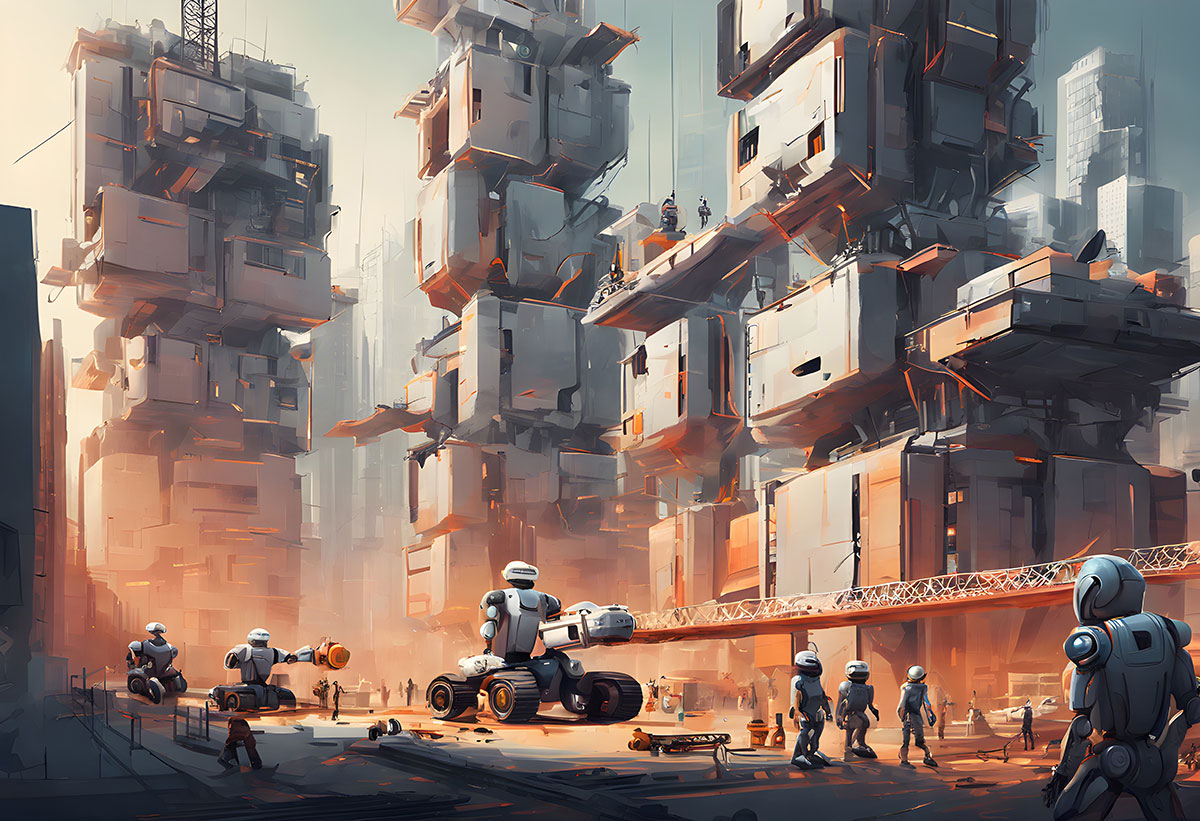What Will the Construction Industry Look Like in 50 Years?

Imagine standing on a construction site 50 years from now. The landscape is both familiar and alien, a blend of today’s foundational practices and the futuristic technology we can only dream about. As we peer into the future, it’s fascinating to consider how far we’ve come and how far we might go. The construction industry, known for its heavy machinery, blueprints, and hard hats, is on the cusp of a technological revolution that will reshape the way we build.
Green and Sustainable Materials: The New Standard
In the future, sustainability won’t just be a trend; it will be the standard. Buildings will be constructed from advanced materials that are not only sustainable but also self-repairing and adaptive to environmental changes. Picture concrete that can heal its own cracks using embedded microcapsules of bacteria or polymers that respond to stress by hardening or softening. The use of carbon-neutral or even carbon-negative materials will be widespread, drastically reducing the environmental impact of construction.
The push for sustainability will also lead to the rise of modular construction, where prefabricated building components are created off-site using precision engineering. These modules will be made from recycled or rapidly renewable resources and designed for easy disassembly and reuse, promoting a circular economy in the construction industry.
Artificial Intelligence: The Brain Behind Every Build
Artificial Intelligence (AI) will be the silent partner on every construction project. AI algorithms will analyze data from past projects to predict potential challenges before they arise, optimizing everything from design to supply chain management. Imagine a world where blueprints are a thing of the past, replaced by AI-generated 3D models that adapt in real-time to changes in site conditions, weather, or even last-minute client requests.
AI-driven systems will also manage project timelines, budget allocations, and workforce schedules, ensuring that every aspect of construction is handled with precision. In this future, delays and cost overruns could become relics of the past.
Robots and Drones: The Workforce of Tomorrow
The construction workforce of the future will look very different from today’s. Autonomous robots will handle much of the heavy lifting, performing tasks with a level of accuracy and efficiency that humans simply can’t match. These robots will work alongside human supervisors, who will be equipped with advanced wearable technology that provides real-time data and analytics.
Drones will be the eyes in the sky, constantly monitoring construction sites, inspecting structures, and even delivering materials to hard-to-reach areas. With advanced sensors and AI integration, these drones will identify potential safety hazards or structural weaknesses long before they become serious issues.
Augmented Reality and Virtual Reality: The New Tools for Visualization and Training
Augmented Reality (AR) and Virtual Reality (VR) will be essential tools in the construction industry. Architects and engineers will use AR to overlay digital designs onto physical spaces, allowing clients to walk through a building before it’s even constructed. This technology will streamline the design process, making it easier to spot and correct potential issues early on.
For training, VR will provide immersive, hands-on experiences for workers, allowing them to practice complex tasks in a controlled environment. This will not only improve safety but also ensure that the workforce is highly skilled in using the latest technologies.
New Technologies on the Horizon
Looking even further into the future, we can expect the development of technologies that seem like science fiction today. Nanotechnology could revolutionize materials science, creating structures that are incredibly strong yet lightweight. 3D printing, already making waves in the industry, could evolve to allow for the printing of entire buildings on-site using locally sourced materials.
Quantum computing might play a role in solving the most complex construction challenges, from optimizing energy efficiency to predicting the long-term behavior of materials under stress. We could even see the emergence of \”smart cities\” where buildings and infrastructure are interconnected through the Internet of Things (IoT), constantly communicating to optimize energy use, traffic flow, and even maintenance schedules.
The Human Touch: Creativity and Adaptability
Despite all the technological advancements, the human element will remain crucial in construction. Creativity, problem-solving, and adaptability are qualities that machines can never fully replicate. The construction industry of the future will require a workforce that is not only technologically savvy but also able to think critically and innovate on the fly.
In 50 years, construction will be a blend of human ingenuity and technological prowess, creating structures that are more efficient, sustainable, and resilient than ever before. While the tools and materials may change, the core of construction—building the world around us—will remain a testament to human ambition and creativity.
So, as we look forward to the next half-century, we can be confident that the construction industry will continue to evolve, shaping the future in ways that are as exciting as they are unpredictable. The buildings of tomorrow will be a reflection of our best ideas, brought to life by technology and human skill, standing as monuments to our ever-progressing society.
Recommended articles
The Future of Construction: 3 Major Trends Shaping the Next Decade
Digging for Profit: Secrets to Success in the Construction Industry
Seize the Opportunity: How Construction Contractors Can Benefit from Low-Carbon Material Incentives
Stop losing profit.
Build bids in minutes and track every dime with ProfitDig.
Start Risk-Free30-Day Money Back Guarantee